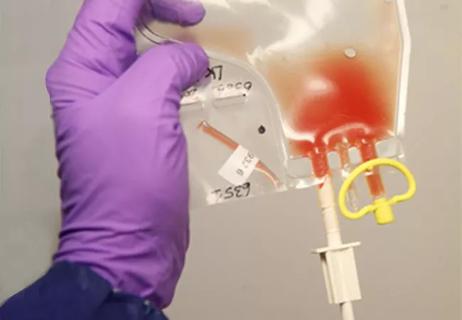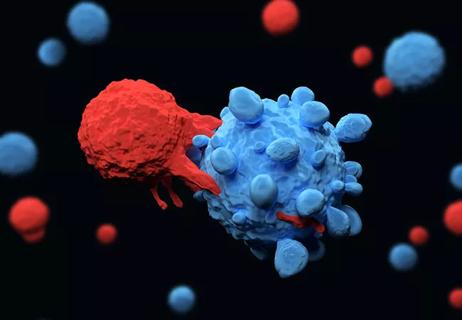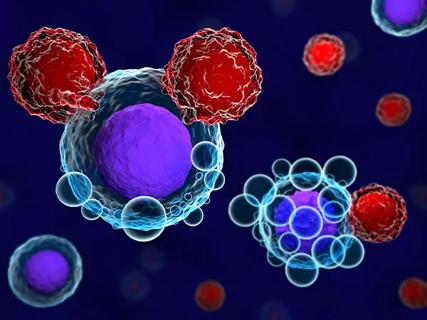Study reveals characteristics that may spark the development of myelodysplastic syndrome and acute myeloid leukemia

In the largest study of its kind, researchers have identified the clinical, immunogenetic, and molecular features that characterize the evolution of aplastic anemia (AA) and paroxysmal nocturnal hemoglobinuria (PNH) to myelodysplastic syndrome (MDS) or acute myeloid leukemia (AML).
Cleveland Clinic is a non-profit academic medical center. Advertising on our site helps support our mission. We do not endorse non-Cleveland Clinic products or services. Policy
Investigators from Cleveland Clinic and two other institutions found that an absence of PNH clones, a suboptimal response to immunosuppressive therapy, older age at AA/PNH onset, and the presence of certain somatic mutations at diagnosis put patients at greater risk of malignant evolution. This increased risk may be the consequence of a relentless autoimmune attack producing a maladaptive response to immunosuppression.
The findings were presented at the 63rd American Society of Hematology Annual Meeting in December 2021.
Although immunosuppressive therapy results in hematologic recovery in most patients with AA, clonal evolution to a secondary myeloid malignancy is a major complication in long-term survivors. Those who develop AML or MDS (a precursor to leukemia) have a poor prognosis and low rate of survival, explains study co-investigator Jaroslaw P. Maciejewski, MD, PhD, Chairman of Translational Hematology and Oncology Research at Cleveland Clinic’s Taussig Cancer Institute.
“Because Cleveland Clinic is a major referral center for AA, we were able to carefully evaluate an unprecedented number of patients,” explains Dr. Maciejewski. “With the advent of sequencing technologies and molecular testing, we had the opportunity to determine and characterize factors that indicate an enhanced risk of leukemia evolution.”
The researchers assessed a retrospective cohort of 1,008 patients with AA/PNH from Cleveland Clinic, Hôpital Saint-Louis in Paris, and The University of São Paulo, Ribeirão Preto, Brazil. Because of the rarity of the disease and the slow rate of progression, a cohort of patients with an adequate duration of follow-up was also required.
“We established that the presence of certain somatic mutations during the course of AA is associated with disease evolution, while the presence of other mutations is neutral in terms of the risk of clonal evolution,” explains Dr. Maciejewski. “All mutations are not equal at the stage of AA.”
The cumulative incidence of malignant progression at 10 years was found to be higher in study subjects with AA than in those with classic PNH (13% vs. 3%, respectively). Severe disease, older age at presentation and a suboptimal response to immunosuppressive treatment were significantly associated with worse overall survival and an increased risk of malignant progression on both univariate and multivariate analysis. An analyses of patients with nonsevere disease showed comparable rates of progression.
Of the patients with malignant progression, MDS was the most frequent diagnosis at evolution, followed by AML and MDS/MPN.
In a cross-sectional analysis, only 16% of patients harbored myeloid mutations at baseline, and a higher frequency of mutations was found among patients with AA as opposed to those with a PNH phenotype.

First-ever U.S. population-level retrospective analysis reveals many patients with systemic mastocytosis need faster intervention

Global R&D efforts expanding first-line and relapse therapy options for patients

A case study on the value of access to novel therapies through clinical trials

Multiple Cleveland Clinic sites to participate in National Cancer Institute trial comparing treatment regimens for newly diagnosed patients

Cleveland Clinic oncologists’ selected abstracts

On-demand stem cell mobilizer is an effective salvage strategy

Dispelling myths and sharing practical experiences

Research indicates strong rationale for expanding trial eligibility criteria